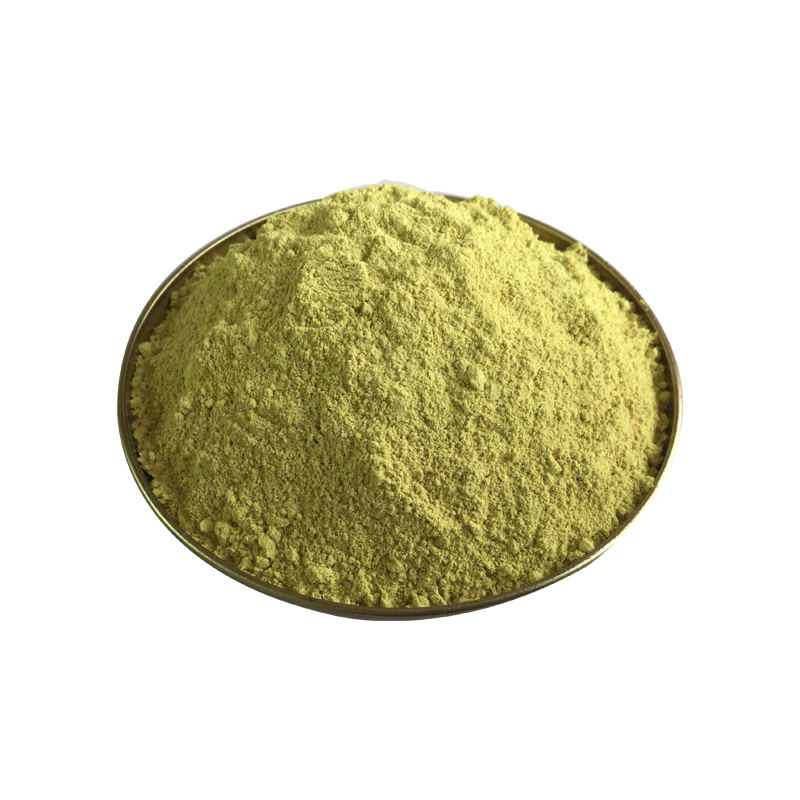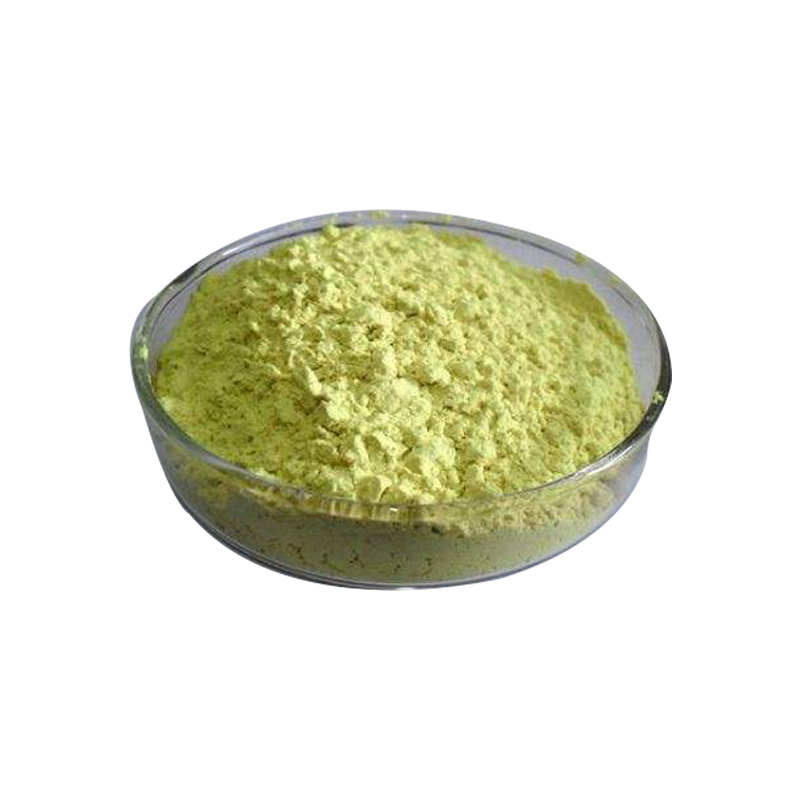Products Description of Glutathione CAS#70-18-8Glutathione is a tripeptide compound formed by glutamic acid, cysteine and glycine through peptide bond condensation. It is the most important low-molecular thiol for anti-oxidative stress in mammalian cells. It was discovered in 1921 and its chemical structure was determined in 1930. Dr. Al Mindell, a famous American nutrition and health expert, called glutathione a triple-effective anti-aging amino acid. It is also known as nature's antioxidant master. It has the appearance of colorless, transparent, elongated granular crystals.
Contact Now
Cyclohexane CAS# 110-82-7Cyclohexane is a normal alicyclic hydrocarbon, which is a ring shape composed of six carbon atoms, every of which is linked to two hydrogen atoms. It has two most important conformations: chair and boat, of which the chair conformation is the most stable. It is a colorless liquid with a pungent smell at room temperature and pressure. It is insoluble in water, however miscible with most natural solvents such as ethanol, ether, benzene, and acetone.
Contact Now
Products Description of Imidazolidinyl urea CAS#39236-46-9White flowing powder, hygroscopic, odorless or with a slight characteristic odor, easily soluble in water, soluble in propylene glycol and glycerin, and hardly soluble in ethanol.Imidazolidinyl urea Chemical PropertiesMelting point 141-143℃Boiling point 514.04°C (rough estimate)density 1.4245 (rough estimate)vapor pressure 0Pa at 25℃refractive index 1.6910 (estimate)storage temp. 2-8°Csolubility Soluble in water and in glycerol, but insoluble in almost all organic solvents.pka7.41±0.10(Predicted)f
Contact Now
Products Description of Color Developing Agent CD-3 CAS#24567-76-8White powder crystalColor Developing Agent CD-3 Chemical PropertiesWater Solubility Soluble in waterform powder to crystalcolor White to Light yellow to Light orangeInChIInChI=1S/2C12H21N3O2S.3H2O4S/c2*1-4-15(8-7-14-18(3,16)17)11-5-6-12(13)10(2)9-11;3*1-5(2,3)4/h2*5-6,9,14H,4,7-8,13H2,1-3H3;3*(H2,1,2,3,4)InChIKeyNPDFXFLCEDDWEG-UHFFFAOYSA-NSMILESC1(=CC=C(N)C(C)=C1)N(CC)CCNS(=O)(=O)C.C1(=CC=C(N)C(C)=C1)N(CC)CCNS(=O)(=O)C.S(=O)(=O)(O)O.S(=O)(=O)(O)O.S(=O)(=O)(O)OSafety InformationHazard Codes Xn;N,N,XnRisk
Contact Now
Products Description of 5-Chloro-2-pentanone CAS#5891-21-4Liquid. Boiling point 76℃ (4.53kPa), 71-72℃ (2.67kPa), relative density 1.0523 (20/4℃), refractive index 1.4375, flash point 35℃.
Contact Now
Products Description of 2-HYDROXY-3-METHYLPYRIDINE CAS#91914-04-4White powder2-HYDROXY-3-METHYLPYRIDINE Chemical PropertiesBoiling point 292.1±20.0 °C(Predicted)density 1.120±0.06 g/cm3(Predicted)storage temp. under inert gas (nitrogen or Argon) at 2-8°Cpka10.37±0.10(Predicted)CAS DataBase Reference91914-04-4(CAS DataBase Reference)Factory and Equipment ShowFast transport timeInventory 2-3 working days New manufacturing 7-10 working days
Contact Now
Products Description of Rutin CAS#153-18-4Rutin is a rutin glycoside of the flavonol compound quercetin. It is a flavonoid compound extracted from plants and exists in rue, bitter buckwheat, locust tree buds, catalpa leaves, tomato stems, leaves and seed shells.Dried buckwheat that is about to bloom contains about 3%. Jujube, hawthorn, ginkgo, wolfberry, motherwort, bupleurum, selfheal, aloe, Gynostemma pentaphyllum, etc. all contain rutin.
Contact Now
Products Description of (Hexadecylamidopropyl)trimethylammonium chlorideCAS#51277-96-4White powder(hexadecylamidopropyl)trimethylammonium chloride Chemical Propertiesdensity 1.029[at 20℃]vapor pressure 0Pa at 20℃Water Solubility 203mg/L at 20.1℃LogP2.49 at 25℃EPA Substance Registry System1-Propanaminium, N,N,N-trimethyl-3-[(1-oxohexadecyl)amino]-, chloride (51277-96-4)Factory and Equipment ShowFast delivery timeInventory 2-3 working days New production 7-10 working days
Contact Now
Products Description of Dimethyl Disulfide 99.5% MIN CAS#624-92-0Dimethyl disulfide is an organic compound with the chemical formula C2H6S2.Dimethyl disulfide Chemical PropertiesMelting point -85 °CBoiling point 109 °C(lit.)density 1.0625vapor density 3.24 (vs air)vapor pressure 22 mm Hg ( 20 °C)refractive index n20/D 1.525(lit.)FEMA 3536 | DIMETHYL DISULFIDEFp 76 °Fstorage temp. Flammables areasolubility 2.7g/lform LiquidSpecific Gravity1.0647 (20/4℃)color Clear yellowOdorat 0.10 % in propylene glycol.
Contact Now
Products Description of Antioxidant 168 CAS#31570-04-4Antioxidants are organic compounds that can inhibit or delay the thermal oxidation of polymers and other organic compounds in the air. Usually, adding a small concentration of 1% antioxidant is very effective. For example, foods are prone to oxidation and deterioration, and a small amount of antioxidants can be added to extend their storage time. Polymer materials such as plastics, synthetic fibers and rubber are prone to thermal oxidation degradation reactions.
Contact Now
Ethanol CAS# 71-23-81-propanol is the compound with the hydrogen atom in the propane molecules being changed by way of hydroxyl group. Because the hydroxyl crew can alternative the hydrogen atoms contained in the carbons in the two terminals of carbon chain or center carbon, hence producing two isomers, n-propyl alcohol and isopropyl alcohol.The chemical property of the 1-propanol is comparable to that of ethanol.
Contact Now
Ethyl acetate CAS# 141-78-6Chemical Properties:Ethyl acetate (structure shown above) is the most familiar ester to many chemistry students and possibly the ester with the widest range of uses. Esters are structurally derived from carboxylic acids by replacing the acidic hydrogen by an alkyl or aryl group. Ethyl acetate itself is a colourless liquid at room temperature with a pleasant "fruity" smell, b.p.
Contact Now
Products Description of Palmitoylethanolamide (PEA) CAS#544-31-0Palmitoylethanolamide (PEA) is an endogenous fatty acid amide that belongs to the class of nuclear factor agonists.
Contact Now
Products Description of 1,3-Dimethylurea CAS#96-31-11,3-Dimethylurea, an organic chemical substance, CAS number: 96-31-1, molecular formula: C3H8N2O.1,3-Dimethylurea Chemical PropertiesMelting point 101-104 °C(lit.)Boiling point 268-270 °C(lit.)density 1.142vapor pressure 6 hPa (115 °C)refractive index 1.4715 (estimate)Fp 157 °Cstorage temp. Store below +30°C.solubility H2O: 0.1 g/mL, clear, colorlesspka14.57±0.46(Predicted)form Crystalscolor WhitePH9.0-9.5 (100g/l, H2O, 20℃)Water Solubility 765 g/L (21.5 ºC)BRN 17
Contact Now
Products Description of Methyl 3-amino-4-methylthiophene-2-carboxylate CAS#85006-31-1Methyl 3-amino-4-methylthiophene-2-carboxylate is an organic raw material.Methyl 3-amino-4-methylthiophene-2-carboxylate CAS#85006-31-1 Chemical PropertiesMelting point 85-88 °C (lit.)Boiling point 318.6±37.0 °C(Predicted)density 1.264±0.06 g/cm3(Predicted)Fp >100°Cstorage temp. Keep in dark place,Sealed in dry,Room Temperaturesolubility Chloroform (Slightly), Methanol (Slightly)pka1.71±0.10(Predicted)form Solidcolor Pale YellowWater Solubility 1g/L at 35℃BR
Contact Now
Products Description of Phenylbutazone sodiumCAS#129-18-0Antipyretic and analgesic, used to treat rheumatic and rheumatoid arthritis and gout, etc.Phenylbutazone sodium Chemical Propertiesstorage temp. under inert gas (nitrogen or Argon) at 2-8°CCAS DataBase Reference129-18-0(CAS DataBase Reference)Factory and Equipment ShowFast delivery timeInventory 2-3 working days New production 7-10 working days
Contact Now
Products Description of 4-Chloro-3-methylphenol CAS#59-50-7Colorless crystal. The melting point is 66°C (55.5°C), the boiling point is 235°C, 1g can be dissolved in 250ml of water at 20°C, more dissolved in hot water, and easily soluble in benzene, ether, ethanol, acetone, chloroform and petroleum ether. Can evaporate with water vapor. Used in organic synthesis, such as dyes, film preservatives, etc. Used as pharmaceutical preservative1.
Contact Now
Products Description of 3,5-Dinitrosalicylic acid CAS#609-99-4Yellow flaky crystals. Melting point 173-174°C. Soluble in alcohol, benzene, ether, slightly soluble in water.3,5-Dinitrosalicylic acid Chemical PropertiesMelting point 168-172 °C (lit.)Boiling point 369.91°C (rough estimate)density 1.7914 (rough estimate)refractive index 1.5300 (estimate)storage temp. room tempsolubility H2O: soluble50mg/mLform Powderpka1.57±0.10(Predicted)color YellowPH Range1.3-1.8 (10g/L @ 20°C)Water Solubility solubleBRN 2220661Stability:Stable.
Contact Now
Products Description of Trimesic acid CAS#554-95-0Trisproic acid is in the form of white to slightly yellow crystalline powder. Solubility: easily soluble in ethanol, soluble in ether, and soluble in 40 parts of water at 23°C.
Contact Now
Products Description of Isonicotinic acid CAS#55-22-1Isonicotinic acid is also known as pyridine-4-carboxylic acid. White needle-shaped crystals. Odorless, can sublime. Molecular weight 123.11. Melting point 319℃. Slightly soluble in cold water, soluble in hot water, insoluble in alcohol, benzene, ether. It is an amphoteric compound, soluble in both acid and alkali. Soluble in hot water and ethanol, slightly soluble in cold water and ether.
Contact Now
Products Description of Citric acid CAS#77-92-9Citric acid is a white, crystalline, weak organic acid present in most plants and many animals as an intermediate in cellular respiration. Citric acid contains three carboxyl groups making it a carboxylic, more specifically a tricarboxylic, acid.the name citrus originates from the Greek kedromelon meaning apple of melon for the fruit citron. Greek works mention kitron, kitrion, or kitreos for citron fruit, which is an oblong fruit several inches long from the scrublike tree Citrus medica.
Contact Now
Products Description of Tannic acid CAS#1401-55-4This product is a light yellow to light brown powder with a special odor and an extremely astringent taste; soluble in 1 part of water or ethanol, soluble in acetone, and insoluble in chloroform or ether.Tannic acid Chemical PropertiesMelting point 218 °C (lit.)Boiling point 862.78°C (rough estimate)density 1.2965 (rough estimate)refractive index 1.7040 (estimate)FEMA 3042 | TANNIC ACID (QUERCUS SPP.)Fp 198°Cstorage temp. Storage temperature: no restrictions.solubility ethanol: soluble100mg/mL, yellow
Contact Now
Products Description of Dinonylnaphthalenesulfonic acid CAS#25322-17-2Dinonylnaphthalenesulfonic acid is a chemical substance with the molecular formula C28H44O3S.Dinonylnaphthalenesulfonic acid Chemical PropertiesBoiling point 94-99 °Cdensity 0.852 g/mL at 25 °Crefractive index n20/D 1.465Fp 30 °Fstorage temp. 2-8°Csolubility H2O: insolubleCAS DataBase Reference25322-17-2(CAS DataBase Reference)EPA Substance Registry SystemNaphthalenesulfonic acid, dinonyl- (25322-17-2)Safety InformationHazard Codes F,Xn,NRisk Statements&nb
Contact Now
Products Description of Optical brightener OB-1 CAS#1533-45-5Fluorescent whitening agent OB-1, 2,2-(4,4-diphenylethylene) bisbenzoxazole, is a yellow crystalline substance with a melting point of 359-362℃, insoluble in water, odorless, stable performance, and a maximum absorption spectrum wavelength of 374nm. It has strong fluorescence and a fluorescence emission wavelength of 434nm.
Contact Now

































